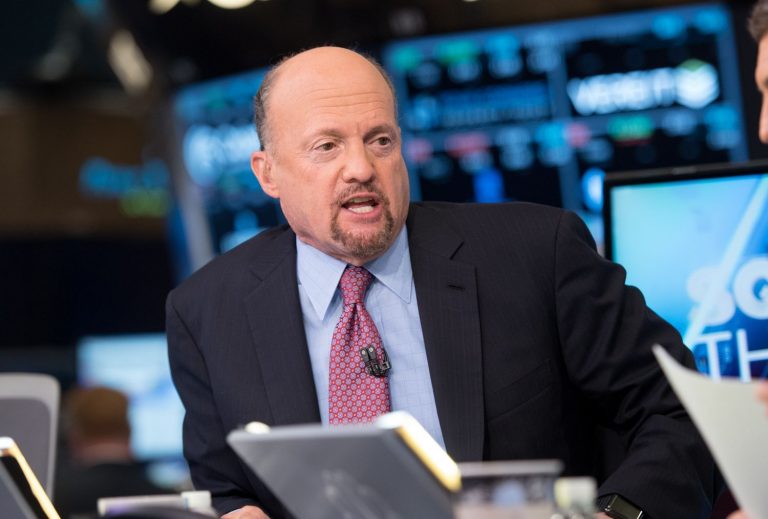
Wall Street veteran Jim Cramer is advising investors to stay composed following Moody’s historic downgrade of U.S. debt, the agency’s first such move in over a century.
The downgrade, which came after markets closed on Friday, pushed Treasury yields higher and briefly dragged down major indexes at the start of Monday’s trading. But despite the initial dip, stocks recovered to close slightly higher, as investors appeared to shrug off the worst of the downgrade fears.
Moody’s decision to cut the U.S. sovereign credit rating from Aaa to Aa1 underpins the agency’s mounting concern about the federal government’s ability to manage its rising debt burden, now above $36 trillion. Citing a “continued rise in the debt burden and a lack of effective fiscal policy measures,” Moody’s said the U.S. faces increased risks that “are unlikely to be reversed in the near term.”
Register for Tekedia Mini-MBA edition 19 (Feb 9 – May 2, 2026): big discounts for early bird.
Tekedia AI in Business Masterclass opens registrations.
Join Tekedia Capital Syndicate and co-invest in great global startups.
Register for Tekedia AI Lab: From Technical Design to Deployment (next edition begins Jan 24 2026).
The market reaction on Monday reflected some of that unease. The Dow Jones Industrial Average opened more than 300 points lower, while the S&P 500 dipped 1% at session lows. Treasury yields, especially on the long end, surged, pushing the 30-year yield briefly above 5%, the highest since 2023. However, by the end of the day, the Dow closed up 0.32%, the Nasdaq eked out a 0.02% gain, and the S&P 500 ended up 0.09%, extending its winning streak to six sessions.
“Fear is what must be tamed”
Cramer, host of CNBC’s Mad Money, pushed back against the panic triggered by Moody’s downgrade, urging investors to resist what he called a fear-driven sell-off. He compared the reaction to past downgrades from S&P in 2011 and Fitch in 2023, which caused temporary turbulence but ultimately had little long-term impact on market performance.
“Fear is what must be tamed, if you want to be a good investor,” Cramer said during his segment on Monday. “Friday’s post-close downgrade was just that: a ‘get out now’ story that spooked investors into selling out of perfectly fine portfolios.”
He noted that investors are “conditioned to be fearful” whenever credit rating agencies make moves like this. Rather than acting impulsively, Cramer said, investors should interpret the downgrade as a cautionary flag—one that signals a need for smarter allocation, not panic.
“You are being given an early warning to invest more—not more aggressively—but more of what you can save. That’s the real hedge if you’re worried about the government’s creditworthiness, not the ‘get out now,’” he said.
Cramer’s advice diverges sharply from the sentiment that often follows such sovereign downgrades. He warned that this would not be the last time investors are told to pull out of the market, but emphasized that many of these alerts are designed to generate fear, not to protect portfolios.
“The people who write these are either fools who know nothing or incredibly shrewd short sellers who really need to spread fear because of their business model,” Cramer added, in a direct swipe at what he sees as agenda-driven messaging from credit analysts or market pessimists.
Gold, Bitcoin, and a long-term mindset
While playing down the downgrade’s significance, Cramer acknowledged that investors worried about ballooning federal debt could consider hedges like gold and Bitcoin.
“If you want to act on that fear, those are your hedges,” he said. But again, he insisted the best strategy remains disciplined investing focused on savings and fundamentals, not reactionary exits.
His commentary came amid growing concerns over Washington’s long-term fiscal path. With a divided Congress and persistent partisan gridlock, investors worry that there’s little appetite in Washington for making tough decisions on taxes or entitlement reforms. Moody’s flagged these political limitations as a core reason for its downgrade.
The government’s fiscal deficits remain very large, and the debt affordability metrics will continue to deteriorate, the agency said in its assessment. The downgrade, Moody’s added, reflects the significant decline in debt affordability in recent years.
However, for all the alarms raised, many market analysts view the impact of the downgrade as largely symbolic. Speaking to Reuters, several analysts noted that Moody’s move was already priced in.
A downgrade decades in the making
This is not the first time a major rating agency has downgraded the U.S. S&P stripped the U.S. of its triple-A rating in 2011 during a similar debt-ceiling standoff in Congress. Fitch followed suit in 2023, citing political instability and rising deficits.
Moody’s, which until Friday had maintained the U.S.’s top-tier rating, finally made the move after repeated warnings throughout 2024. It said it no longer had confidence that lawmakers would implement the necessary reforms to restore the government’s financial health.
Despite the historic nature of the downgrade, Wall Street is not treating it as a watershed moment. The rebound in stocks on Monday suggests that investors are focusing on the current strength of the U.S. economy, rather than Moody’s long-term concerns. Unemployment remains low, corporate earnings have come in strong, and consumer spending continues to hold up.
Moody’s downgrade may be a wake-up call for Washington more than Wall Street. With debt service costs surging and political dysfunction worsening, the long-term risks are real. But in the short term, the fundamentals of the U.S. economy seem to remain intact.
This seems to have informed Cramer’s advice to investors tempted to abandon their positions amid fear, stay the course, tune out the noise, and invest prudently.



